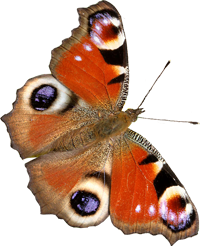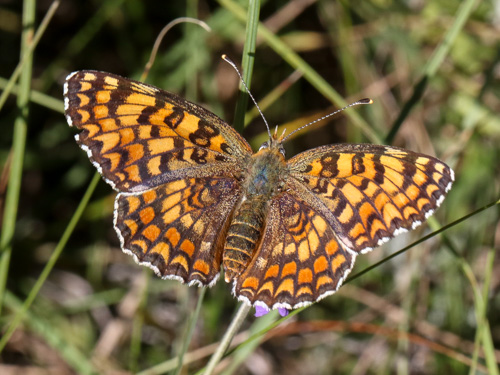
Huesca, Spain, July 2017
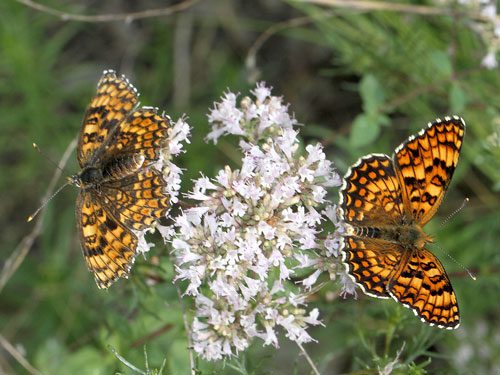
Valais, Switzerland, July 2010
Field notes and information
Often common and widespread, this is a highly variable species, individually, locally and regionally. A relative constant is the darker orange of the upperside post discal band.
A very similar species has recently been found in Europe. The Aegean fritillary M. ornata was split from the current species in 2005. The definitive split is the colour of the head capsule of the final instar larva: black in phoebe, red in ornata.
In 2009, the north African subspecies phoebe punica was raised to species level, M. punica based on DNA, genetalia and wing characteristics.
Identification & Similar species: Several similar species are differentiated as follows:
Aegean Fritillary M. ornata: very difficult to distinguish. Currently, it's not possible to separate adults with certainty, the red head of the larva of M. ornata is definitive.
African knapweed fritillary M. punica: completely replaces M. phoebe in N Africa.
Glanville fritillary M. cinxia: Upperside discal band forms a continuous line. Hindwing post discal row of black spots on upper and undersides. Upperside ground colour uniform. Underside hindwing post discal row of black pupilled orange spots lack black arches. Most of Europe and northwest Africa. Absent from most of southern Spain, most of Scandinavia and the UK.
Knapweed fritillary M. phoebe: Upperside discal band usually a thick line of more or less joined up squarish spots. Hindwing postdiscal row of black spots only on upperside, and often absent. Upperside ground colour variegated with post discal area usually a deeper orange. Most of Europe and north Africa except the UK, Scandinavia.
Freyer's fritillary M. arduinna: Upperside discal band a row of mostly separated round spots. Very local in the Balkans, from northern Greece to eastern Serbia.
Aetherie's fritillary M. aetherie: Upperside discal band a row of well separated round spots and post discal band in the male very lightly marked. Hindwing post discal row lacking black spots. Uppserside ground colour uniform. Very local in north Africa, Sicily, south Spain and south Portugal.
Distribution & Flight: N Africa, most of Europe except the north (UK, north Germany, Scandinavia). Several broods from April to September, shorter at higher altitudes.
Habitat & Behaviour: A wide range of habitats are exploited, usually flowery open places associated with bushes or trees.
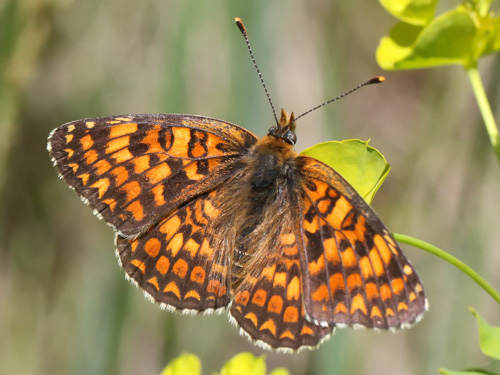
Valais, Switzerland, May 2021
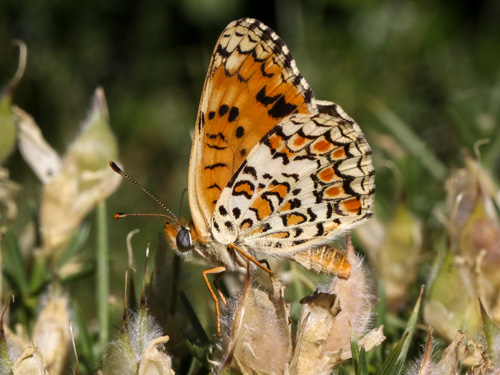
Huesca, Spain, July 2017
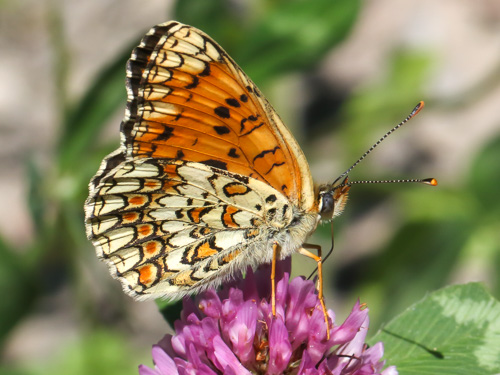
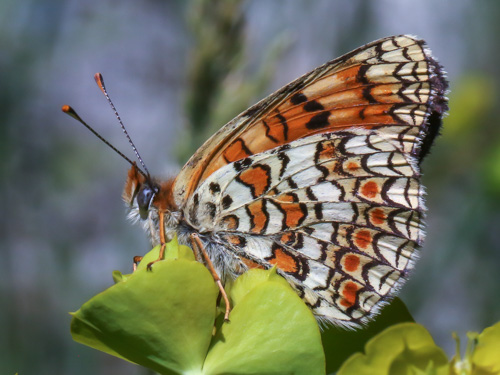
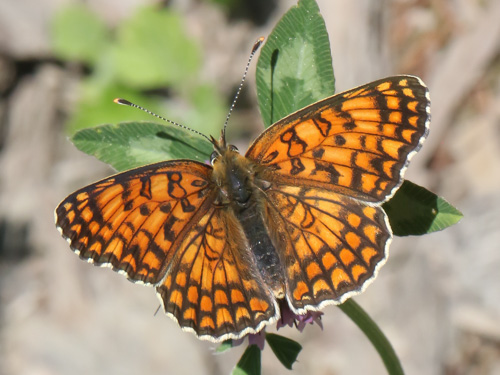
Valais, Switzerland, May 2021
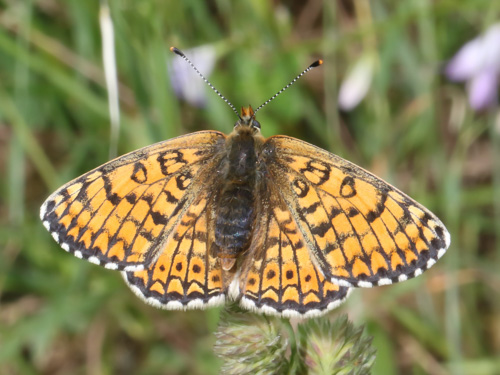
Tuscany, Italy, May 2019
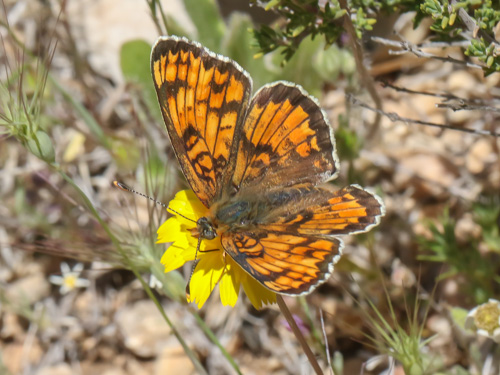
Granada, Spain, May 2019
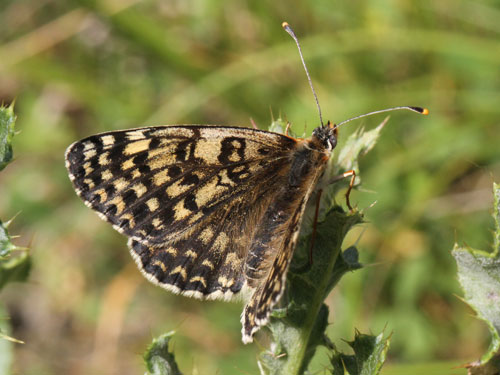
Valais, Switzerland, July 2010
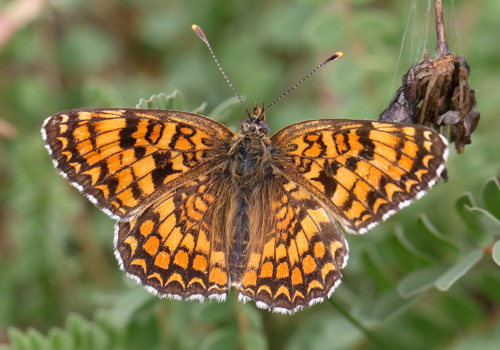
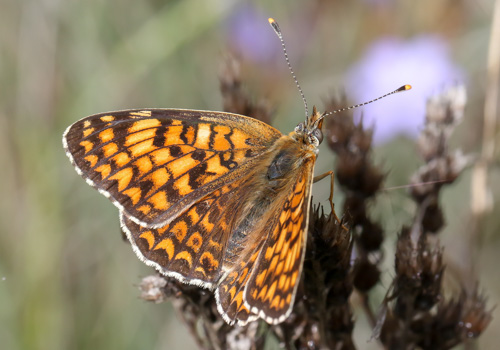
Digne les Bains, France, May 2022
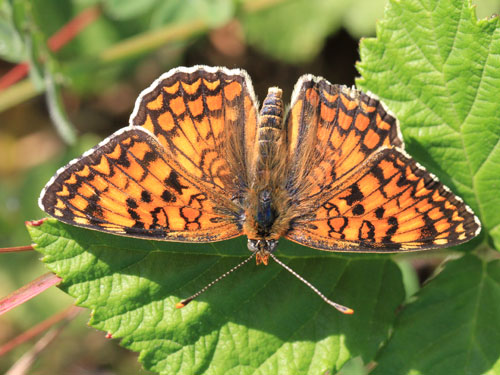
Var, France, May 2012
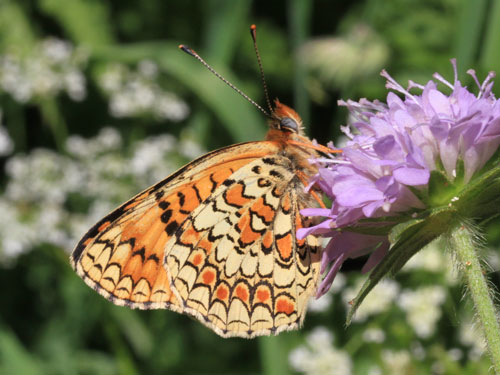
SW Serbia, June 2012
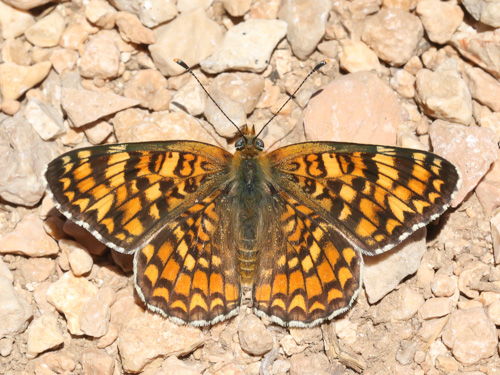
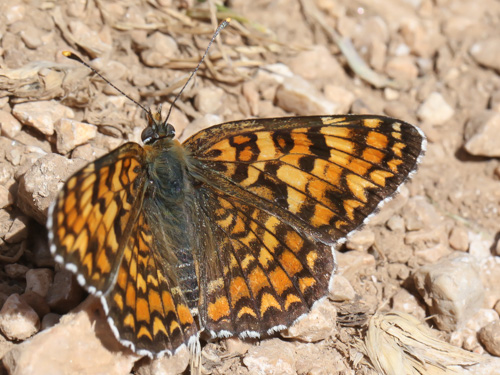
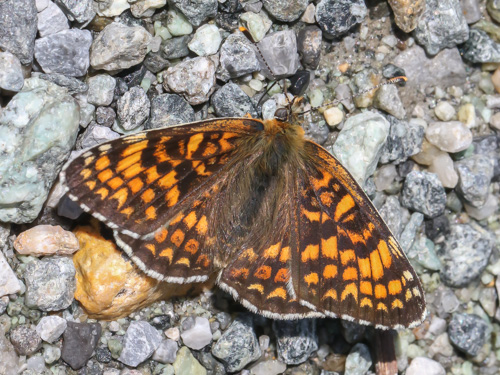
Granada, Spain, May 2019
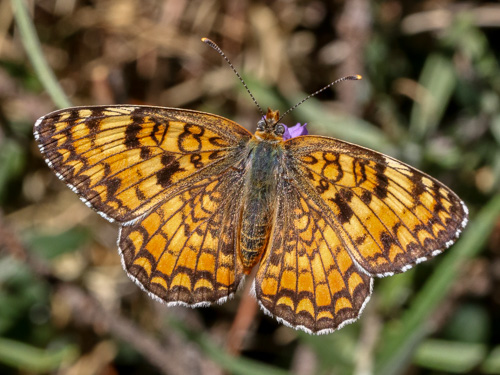
Huesca, Spain, July 2017
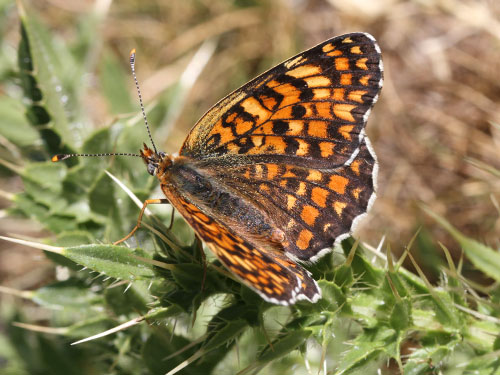
Sierra Nevada, Spain, July 2013
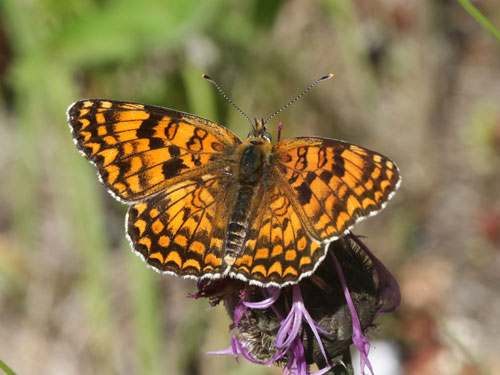
Valais, Switzerland, July 2016
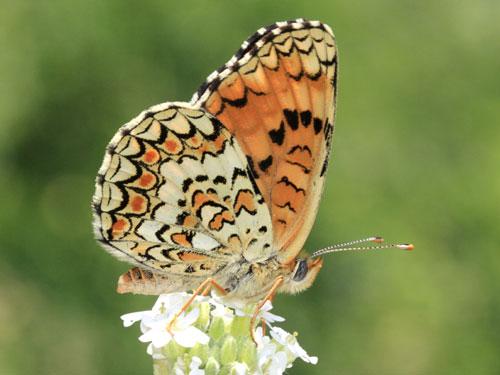
Valais, Switzerland, June 2012
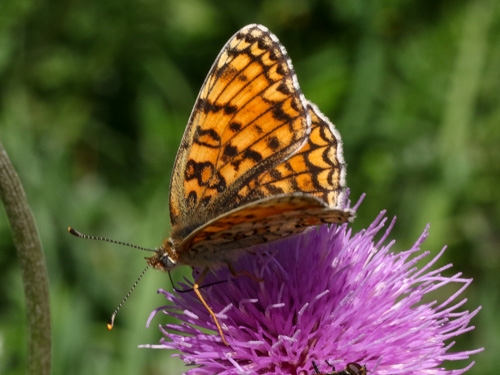
Jura, France, June 2018
